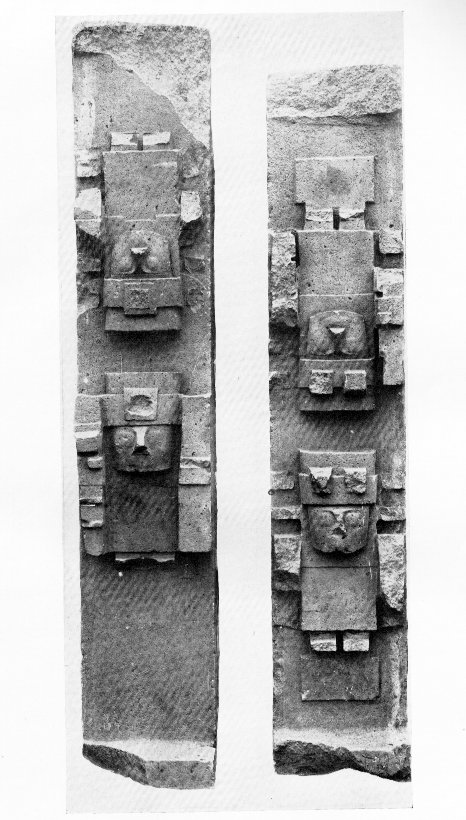|
RIGEL
The waves of time-space implied reversals both at an apex (climax, noon) and at a nadir (midnight, ebb).
Here the orientation was bound to abruptly change with 180º, from looking ahead to looking behind - to that which already had happened and therefore would be well known.
... For the Maori the past is an important and pervasive dimension of the present and future. Often referred to as the 'ever-present now', Maori social reality is perceived as though looking back in time from the past to the present. The Maori word for 'the front of' is mua and this is used as a term to describe the past, that is, Nga wa o mua or the time in front of us. Likewise, the word for the back is muri which is a term that is used for the future. Thus the past is in front of us, it is known; the future is behind us, unknown. The point of this is that our ancestors always had their backs to the future with their eyes firmly on the past. Our past is not conceived as something long ago and done with, known only as an historical fact with no contemporary relevance or meaning. In the words of a respected Maori elder: The present is a combination of the ancestors and 'their living faces' or genetic inheritors, that is the present generations. Our past is as much the face of our present and future. They live in us ... we live in them ... And the orientation was also changing from standing head up to falling head down:
... Janus was perhaps not originally double-headed: he may have borrowed this peculiarity from the Goddess herself who at the Carmentalia, the Carmenta Festival in early January, was addressed by her celebrants as 'Postvorta' and 'Antevorta' - 'she who looks both back and forward' ... Antevorta and Postvorta had two altars in Rome and were invoked by pregnant women as protectors against the dangers of childbirth. Antevorta was said to be present at the birth when the baby was born head-first; Postverta, when the feet of the baby came first ... ... But in the fullness of time an obscure instinct led the eldest of them towards the anthill which had been occupied by the Nummo. He wore on his head a head-dress and to protect him from the sun, the wooden bowl he used for his food. He put his two feet into the opening of the anthill, that is of the earth's womb, and sank in slowly as if for a parturition a tergo. The whole of him thus entered into the earth, and his head itself disappeared. But he left on the ground, as evidence of his passage into that world, the bowl which had caught on the edges of the opening. All that remained on the anthill was the round wooden bowl, still bearing traces of the food and the finger-prints of its vanished owner, symbol of his body and of his human nature, as, in the animal world, is the skin which a reptile has shed ... ... The Latins called this Porrima, or Antevorta, sometimes Postvorta, names of two ancient goddesses of prophecy, sisters and assistants of Carmenta or Carmentis, worshiped and at times invoked by their women. Porrima was known as Prorsa and Prosa by Aulus Gellius of our 2d century. γ [Virginis, *191.5] was specially mentioned by Kazwini as itself being Zāwiat al 'Awwā', the Angle, or Corner, of the Barker; and Al Tizini, with Ulug Beg, had much the same name for it; but Al Bīrūnī, qouting from Al Zajjāj, said 'these people are all wrong', and that 'Awwā' here meant 'Turn', referring to the turn, or bend, in the line of stars ... Porrima (*191) - 76 (Cursa, the Footstool of Orion together with Ψ Eridani) = 115 → Mercury.
Virgo displayed a pair of feet, whereas Orion instead had lost his head (*83). 191 - 83 = 108. ... The Heka triplet is where we otherwise would have expected to see a bright single star representing Orion's head (when looking from a location in the northern hemisphere) ... λ and the two stars phi furnish an easy refutation of the popular error as to the apparent magnitude of the moon's disc, Colas writing of this in the Celestial Handbook of 1892: In looking at this triangle nobody would think that the moon could be inserted in it; but as the distance from λ to φ¹ is 27', and the distance from φ¹ to φ² is 33', it is a positive fact; the moon's mean apparent diameter being 31' 7''. This illusion, prevalent in all ages, has attracted the attention of many great men; Ptolemy, Roger Bacon, Kepler, and others having treated of it. The lunar disc, seen by the naked eye of an uninstructed observer, appears, as it is frequently expressed 'about the size of a dinner-plate', but should be seen as only equal to a peppercorn ...
|







